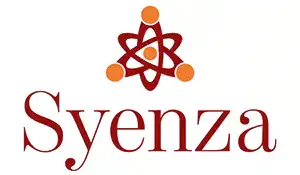Introduction
Thailand’s healthcare system is renowned for its efficiency and effectiveness. Achieving Universal Health Coverage (UHC) in 2002, the country spends around 5% of its GDP on healthcare. Remarkably, over 70% of this funding comes from the government. Despite spending less on health compared to other upper-middle-income countries, Thailand’s health outcomes are impressive. Life expectancy at birth increased from 72.3 years in 2000 to 78.7 years in 2021. Infant mortality decreased from 1.67% to 0.62% in the same period. The UHC index soared from 43.2 to 82.0, and out-of-pocket payments dropped from 34.2% to just 9%. These statistics highlight Thailand’s successful healthcare model.
Thailand’s Health Insurance Schemes
Thailand’s healthcare success stems from its three main public health insurance schemes. The Civil Servant Health Benefit Scheme (CSMBS) covers government employees and their direct relatives. General taxation funds the CSMBS, and the Ministry of Finance manages it. The Social Security Scheme (SSS) serves those in the formal private sector. Employers, employees, and the government finance the SSS, with management by the Ministry of Labour. The Universal Coverage Scheme (UCS) includes the rest of the population. General taxation funds the UCS, and the National Health Security Office (NHSO) oversees it. The Ministry of Public Health provides care, while the NHSO ensures efficient delivery by acting as the purchaser of care for the UCS.
Health Technology Assessment (HTA) in Thailand
The use of Health Technology Assessment (HTA) in Thailand began in the early 1980s. However, its institutionalisation came with the 2007 cost-effectiveness study that informed Thailand’s “Peritoneal Dialysis First Policy” for end-stage renal disease. This led to the creation of the Health Intervention and Technology Assessment Program (HITAP). HTA is now required before making reimbursement decisions for the UCS. The other two schemes, CSMBS and SSS, do not use HTA processes.
Health interventions and technologies for the UCS undergo three processes: the National List of Essential Medicines (NLEM), the Universal Coverage Benefits Package (UCBP), and the National List of Essential Vaccines (NLEV). Medicines under NLEM are divided into categories, with HTA required only for the E2 category, which includes expensive drugs with significant budget implications.
Challenges in Thailand’s HTA Practices
Despite its success, Thailand faces several challenges in its HTA practices. One challenge is the lack of guidelines for early HTA, which can inform the development of health innovations by evaluating them at developmental stages. Another challenge is providing access to and reimbursing high-cost drugs. These drugs often do not meet the cost-effectiveness willingness-to-pay (WTP) threshold of 160,000 Baht per QALY (~USD 5,000). Furthermore, economic evaluations do not explicitly account for equity. This oversight risks introducing cost-effective technologies that fail to enhance societal welfare.
Finally, the environmental impacts of health technologies are ignored. The healthcare sector is a significant emitter of greenhouse gases, contributing to environmental degradation and climate change. Currently, there is no system to report annual greenhouse gas emissions from public healthcare facilities or a database of emissions from health technologies and services.
Future Directions for HTA in Thailand
To address these challenges, Thailand has taken several steps. Five leading agencies have signed a Memorandum of Understanding (MOU) to promote early HTA. These agencies include HITAP, Thailand Science Research and Innovation (TSRI), Thailand Center of Excellence for Life Sciences (TCELS), NHSO, and the National University of Singapore (NUS). Medical Innovation Development (MIDAS), a research unit operated by HITAP and NUS researchers, supports medical innovators in product development and develops guidelines and training for early HTA.
Thailand is also working towards explicitly accounting for the equity impacts of health technologies. The first Distributional Cost-Effectiveness Analysis (DCEA) study, using dialysis as a case study, is underway. Preliminary findings suggest that both policymakers and the public are averse to health inequality and are willing to trade-off some level of total health gains to reduce the inequality gap.
Lastly, Thailand has pledged to achieve carbon neutrality by 2050 and net zero by 2065. The Environmental Economics Unit (e2u) has been established to ensure that reimbursed health technologies are cost-effective, equity-enhancing, and environmentally sustainable. A preliminary study indicates significant greenhouse gas emissions from the Thai health system. The e2u and the Health Administration Division are working to establish a system to report annual greenhouse gas emissions and a database of emissions from health technologies and services.
Conclusion
Thailand’s healthcare system is a model of efficiency and effectiveness. Achieving Universal Health Coverage in 2002, the country has made significant strides in improving health outcomes. The use of Health Technology Assessment (HTA) has played a crucial role in this success. However, challenges remain, including the need for early HTA guidelines, access to high-cost drugs, accounting for equity impacts, and addressing environmental impacts. By addressing these challenges, Thailand can continue to improve its healthcare system and serve as a model for other countries.





